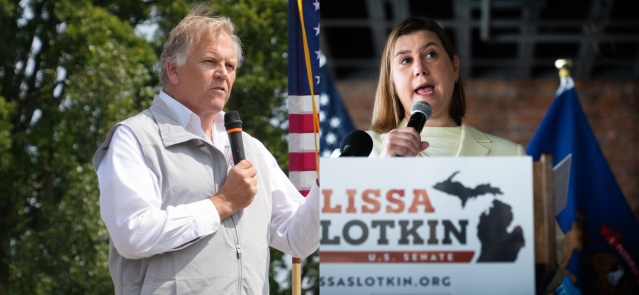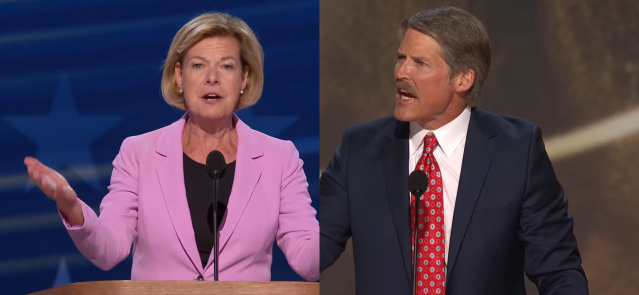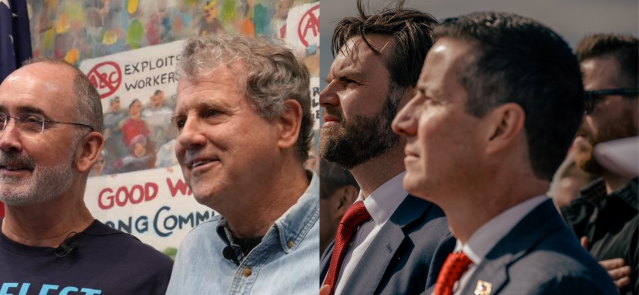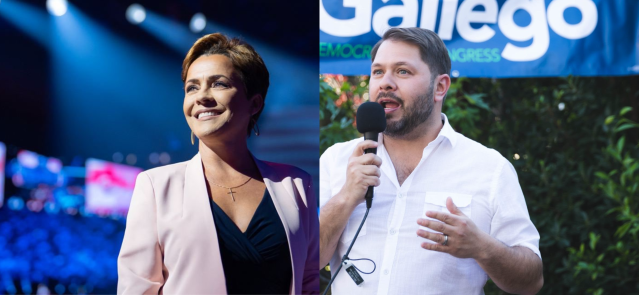Stay ahead of the curve as a political insider with deep policy analysis, daily briefings and policy-shaping tools.
Request a Demo4 key Senate races expose internal challenges for parties
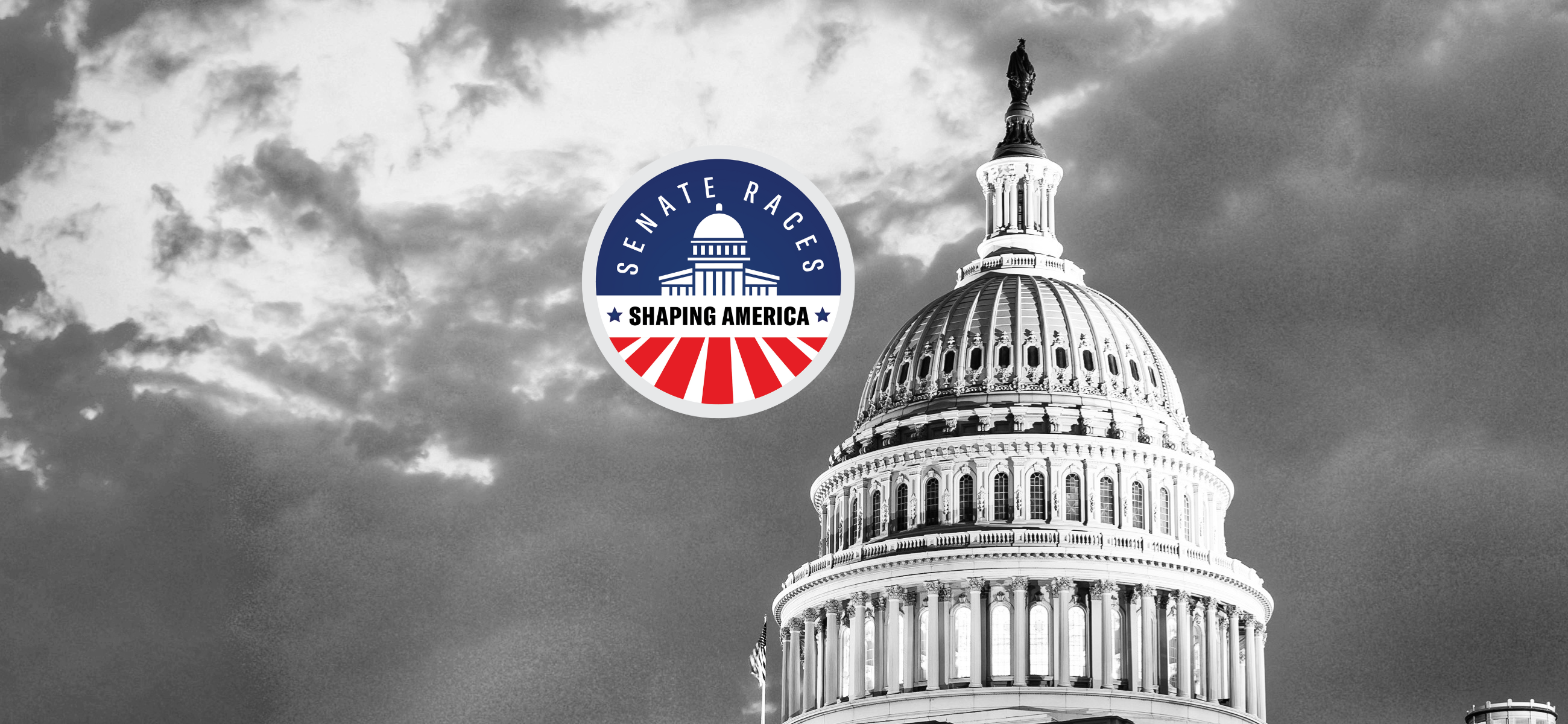
U.S. Capitol. (Design: Shannel Wheeler and jjgervasi)
EDITOR’S NOTE: This report, “Senate Races Shaping America,” produced by State Affairs reporters embedded in Arizona, Michigan, Ohio and Wisconsin, explores how the presidential race and the U.S. Senate elections in those states could set the stage for the next term and beyond.
what’s in this report
- In Wisconsin, Democratic Sen. Tammy Baldwin appears to be courting support from backers of former President Donald Trump as a way to secure another term in the upper chamber. GOP rival Eric Hovde is reminding voters he actually has Trump’s endorsement as critics label him another wealthy businessman seeking to purchase elected office.
- In the race to replace senior Arizona Sen. Kyrsten Sinema, Democratic Congressman Ruben Gallego faces Kari Lake, a former TV news anchor who has hitched her policy wagon to Trump’s platform. With blue congressional districts residing in regions shaded by red, the voter makeup of this state is prompting candidates to think about the middle.
- Facing an electorate where conservatives have momentum, Sen. Sherrod Brown of Ohio is quietly but noticeably distancing himself from national Democratic politics as his opposition brands him as a “rubber stamp” for Vice President Kamala Harris. Meanwhile, Cleveland auto dealer Bernie Moreno has Team Trump in the passenger seat and a campaign strategy that relies on offensive attacks.
- For his Senate bid in Michigan, former Congressman Mike Rogers has openly embraced Trump’s candidacy, but only after being mildly critical of him in the past. His Democratic opponent, Congresswoman Elissa Slotkin, quietly raised red flags over President Joe Biden’s reelection, but is now firmly attached to Harris’ voter turnout operation.
MILWAUKEE — If you want a front-row seat to the intensifying warfare to seize control of America’s upper chamber, while also taking in an unvarnished view of the internal challenges festering within both mainline parties, four states in the Midwest and Southwest are must-visits.
With less than two months until the November election, political eyes are fixed on a handful of states dotting our national map, such as those serving as presidential battlegrounds, namely Arizona, Georgia, Michigan, Nevada, North Carolina, Pennsylvania and Wisconsin. Also in the mix are states where control of the U.S. Senate will be decided, including Arizona, Michigan, Montana, Nevada, Ohio, Pennsylvania and Wisconsin.
Jason Hebert of The Political Firm, a senior political strategist to members of the U.S. House of Representatives leadership, said national campaigns are certainly run nationally, but every cycle of import comes down to specific locales.
“It’s no surprise these states matter more than others,” said Hebert, who works for Republican campaigns and is focused on the congressional level this fall. “These are the states where the top of the ticket is so important to not only how these Senate races are won but also what kind of reverberation reaches the bottom of the ticket too. I don’t think you’re going to find anything outside of these states where there’s more at stake.”
Among the most competitive and arguably politically revealing are Arizona, Michigan, Ohio and Wisconsin — all of which, excluding the Buckeye State, are presidential battlegrounds. Each state, however, is home to increasingly expensive and acrimonious U.S. Senate races that will inform which way the Beltway tilts for the next term, or longer.
While every Senate seat matters, these contests expose deep intramural challenges within the Democratic and Republican parties. The New York Times, citing the Cook Political Report’s nonpartisan methodology, categorizes Arizona, Michigan, Ohio and Wisconsin as four of the seven states with America’s most competitive Senate races.
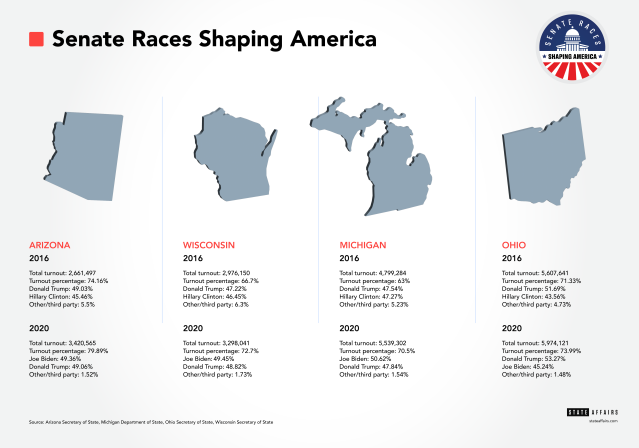
The minds behind those spreadsheets, polling interpretations and political audits easily acknowledge the presidential race will set the pace for many if not all of the competitive Senate races.
As far as this cycle is concerned, you simply can’t have one without the other.
“It has differing impacts from state to state,” said David Wasserman, senior editor and elections analyst with the 40-year-old Cook Report. “Democrats have largely been able to outrun [Vice President] Kamala Harris in Senate polls more than Republicans have been able to outrun [former President] Donald Trump. And, of course, there are differing reasons for that from state to state.”
In Arizona and Michigan, the reasons attributable to the Republican Party can be found in a pair of candidates navigating the complex legacy of the Trump administration.
The vacancy in Arizona was created by senior Sen. Kyrsten Sinema, a politician whose personality intersected repeatedly with celebrity. Her exit gives us poll-friendly Ruben Gallego, a Democratic congressman, and election skeptic Kari Lake, a former television news anchor now widely regarded as one of the cycle’s most polarizing Senate candidates.
Gallego has built a centrist brand around his time at Harvard University and with the Marines, capturing the attention of a wide swath in the voter-rich Phoenix region. Lake, in contrast, is the onetime gubernatorial hopeful who has hitched her own policy platform firmly to Trump’s “America First” effort.
Arizona’s GOP finds itself divided, with firebrand Lake fighting to unite a fractured base — even with a 55% primary vote. Arizona’s unaffiliated voters compose 34% of the 4 million registrants, which could prove decisive in November.
In Michigan, former Congressman Mike Rogers has openly embraced Trump’s bid, but only after being mildly critical of him in the past. Now Rogers is walking a fine line between being a traditional moderate with his own independent talking points and being a pro-Trump candidate.
Like her Great Lakes State opponent, Congresswoman Elissa Slotkin quietly raised red flags over her party’s ticket-topper, President Joe Biden, and initially felt some blowback. Regardless, her campaign is now interconnected to Harris’ voter turnout operation and that of the Democratic Party.
Enthusiasm from rank-and-file voters for both Rogers and Slotkin, meanwhile, is sluggish, said Wasserman, adding, “Michigan is the rare case where both parties really don’t like their candidates.”
In Ohio and Wisconsin, the Democratic leads are taking large, aggressive steps away from the Biden administration and, to some extent, their own Democratic roots.
Two-term U.S. Sen. Tammy Baldwin of Wisconsin is a Democrat openly seeking the support of Trump supporters as a means to securing reelection. The first woman elected to the state’s congressional delegation and first openly gay candidate elected to the U.S. Senate, Baldwin is playing up “buy American” language. And she touted her working relationship with the Trump administration in her campaign’s first advertisement.
Republican opponent Eric Hovde, a businessman who has Trump in his corner, has worked overtime to connect Baldwin to Biden, Harris and everyone in between, going so far as to label the incumbent as a “rubber stamp.” Groups supporting Baldwin, meanwhile, have regularly sought to portray Hovde as an out-of-state multimillionaire looking to buy an elected post.
Over in Ohio, where presidential-related spending is underwhelming due to a predicted GOP win, the two U.S. candidates have counted on in-your-face fundraising and well-heeled friends to mold a race that may set a spending record on the competitive Senate landscape.
Incumbent Sen. Sherrod Brown, who built a political infrastructure on the back of policy work with unions and encouragement from customary Democratic corners, is facing an electorate that grows more conservative by the cycle. As he falls under attack for being yet another rubber stamp for Harris, Brown is seemingly distancing himself from the party structure, first calling for Biden to step aside and then skipping the Democratic National Convention in Chicago.
While Brown fades the heat from within and without, Cleveland auto dealer Bernie Moreno has Team Trump in the passenger seat. The Moreno campaign is supercharged yet acutely aware that U.S. Senate races in Ohio don’t always follow suit with accompanying presidential elections.
To many Moreno supporters, Brown doesn’t only represent control of the Senate, but he also embodies the last vestiges of what GOP diehards wish to retire, as Brown remains the only non-judicial Democrat to win statewide office in Ohio in nearly two decades.
“Years ago, Ohio was part of the epicenter of the universe, in terms of battlegrounds, and now it’s solidly Republican,” said Hebert, co-founder of The Political Firm and a veteran of two presidential campaigns. “The union-and-manufacturing vote is trending more Republican. This is a trend you will likely see strengthening in the Midwest.”
Should that hold true in the Midwest, the trendlines from the outcome of Ohio’s U.S. Senate race will lead by direct route to the verdict of the presidential election. The storyline could also hold true for certain corners of the Southwest and to the East and North.
For the most important races in the nation right now, Wasserman said the connection is unmistakable.
“The presidential race is casting a long shadow over everything this year,” he said.
Krista Kano in Ohio, Kiera Riley in Arizona, JR Ross in Wisconsin and Nick Smith in Michigan contributed to this report.
Jeremy Alford is managing editor of LaPolitics Weekly/State Affairs. Reach him at [email protected] and @LaPoliticsNow.
Know the most important news affecting Arizona
Get our free weekly newsletter that covers government, policy and politics that impact your everyday life—in 5 minutes or less.
Rogers, Slotkin lean into China, national security in US Senate battle
LANSING, Mich. — Michigan voters are faced with a choice for U.S. Senate in November between two candidates with strong national security credentials but with sharply different views on how to effectively address threats to the U.S. Both Southeast Michigan candidates, Republican Mike Rogers of White Lake and Democratic U.S. Rep. Elissa Slotkin of Holly, have been …
Tammy Baldwin faces tough reelection: Can Trump supporters push her past the finish line?
MADISON, Wis. — Tammy Baldwin may need some Donald Trump supporters to secure her reelection. The two-term U.S. senator plays up the “buy American” language she pushed for federal infrastructure projects and touts policies favored by Wisconsin’s dairy industry such as seeking to ban labeling plant-based products “milk.” Her GOP rival Eric Hovde, meanwhile, wants …
Brown vs. Moreno: Incumbent faces biggest reelection challenge yet
COLUMBUS, Ohio — The 2006 election ushered in a new era of Ohio leadership following 12 years of Republican control. Democrats won back the governor’s mansion and three of the four other executive offices while also narrowing Republican majorities in both chambers of the Legislature. Adding to the blue, near-sweep of top state races was …
U.S. Senate candidates race to woo independents in final stretch
PHOENIX — Arizona is purple. Split roughly in three and tinged with shades of red, the voter makeup of the state leaves the 2024 Senate race a dash to the middle. An open Senate seat left by Democrat-turned-independent Kyrsten Sinema brought out Ruben Gallego, a progressive congressman from a small and assured blue district, and …

